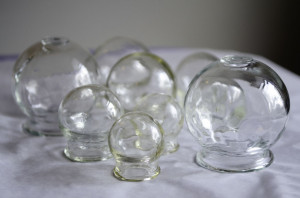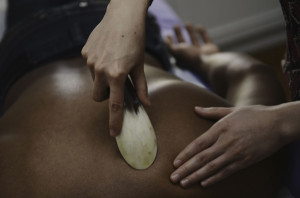Acupuncture For Breast Cancer Talk A Success!
First off, I apologize for my delay in new post timeliness! Between an interesting week at work, spending time with my new nephew, doctor’s appointments, and preparing for out of town company this weekend, what’s a girl to do? And did I mention that I gave a talk at Columbia University Medical on Friday, April 8th, 2011, to touch on the benefits of acupuncture for breast cancer survivors, namely the women of WAR (Women At Risk) support group? I am grateful I had the chance to do so!
I had prepared a wonderful powerpoint presentation for the women, complete with studies, first hand account videos, and statistics. Who would not want to try out acupuncture after all of that goodness? I arrived to the conference room, thumb drive in hand. It turns out that the computer didn’t have powerpoint installed! Ay. And, due to home computer printing problems, I was unable to bring along any slide notes. Here is where my ability to go with the flow, performance background, and, good ole’ elbow grease came in handy! It gave me an opportunity to connect with everyone on purely a heart level.
I spoke about my background in acupuncture, it’s benefits in general for personal wellness, as well as for those dealing with breast cancer. I had brought a lot of acupuncture props:
Packaged Single-Use Filiform Needles – to show how incredibly tiny and thin they are in comparison to what peoples’ perceptions of them may be. I passed these around, and people were amazed at how thin they were. These stainless steel needles are so sleek and smooth, and are a far cry from the stone needles first used when they were invented back in the day. Yes. Stone!

Moxa Stick – a stick made of mugwort, that is burned on one end, and is used in various ways to direct warmth, increase circulation, tonify or augment a deficient condition, among other things, and can be used in loose or stick form. One woman had excitedly interjected that she had bought one at a health fair, but had no idea how to use it. I showed her a wonderful point she could use it on, ST 36. She also had pain in her shoulder, and I suggested she could certainly use over her shoulder.

Cup – is mainly a round glass cup that is open on one end. They come in small to very large sizes. They are mainly used to bring out stagnation, and is especially helpful for pain (back pain, shoulder pain), and even helpful for respiratory problems, including the common cold. It brings up these pathogens to the surface to be released. Cupping is done by lighting an alcohol swab on a hemostat, inserting the flame into a cup in such a way so as to create a vacuum effect, and quickly placing it onto the effected area. It can be done with stationary, sliding, or flash cupping methods. Because I brought one of the largest cups I had, I got a lot of “ooohh” from the ladies when I showed it to them. I found that pretty humorous. If anyone saw it on Newsday, Gwenyth Paltrow made the front page with her cupped back, which had left round bruises in a few spots (she had a great treatment, apparently!)

Gua Sha Horn – gua sha is a method that also brings up stagnation so that it’s visible. It is similar to cupping in this way. But gua sha can be used for body stiffness, fatigue, reduce fever, and muscle injuries, as well. I like the horn, but some people simply use a Chinese soup spoon, or a jade tool. Both cupping and gua sha leaves bruising (which is desirable), which leaves after 3-4 days.

I even did a needle demonstration on a woman beside me who offered her arm. Aside from dealing with breast cancer, she suffers from carpal tunnel, as well as some tingling in her fingers. I needled the top of her forearm, near her wrist. She was so busy chatting with her pal on her right, that she hadn’t noticed I had inserted it. She then turned to me and asked when I was going to do it. I laughed and told her it was already in! I told everyone the advantages of this specific point. I asked her to describe her sensation to everyone, and she said it was like a heaviness, and she could feel a difference already on both sides of her arm, as well as her hand. That sensation of heaviness is one of those desirable sensations when one is getting needled. I removed it after our group was done chatting.
I soon realized how involved these women were in their own healing, since many of them have done much research on their own, from diet, to healing modalities, to meditation.
Nancy Singleton, who’d coordinated the talk, had spoken about how effective reiki had been in her recovery post breast surgery. She had also been taught how to apply reiki on herself to speed this healing. She said it made the biggest difference in her healing.
Being that I also practice reiki, I then led the group into a mini self-reiki session, where we focused on the heart (because who couldn’t use work on the heart?), and I led them through some breathing techniques, how to lay their hands on themselves, and how to send the energy to their heart. It was quite remarkable that as soon as I started the session, the normally talkative and inquisitive gals were immediately quiet and involved. When we were done, Nancy remarked how her heart had immediately calmed down. I felt that too. I think many of the participants did as well.
There were many times where humorous anectotes were shared, and the ladies were always involved and certainly had a healthy sense of humor; but because of the nature of what these ladies were dealing with, there was also a palpable sense of just wanting to feel better, get better.
I thank Nancy and the participants for allowing me to connect with them! I can see why she’s so dedicated to this group. They are remarkable.
Copyright © 2011 by Alcantara Acupuncture & Healing Arts. All rights reserved. You may quote, copy, translate and link to this article, in its entirety, on free, non-donation based websites only, as long as you include the author name and a working link back to this website. All other uses are strictly prohibited.
All information on this website is my own opinion, and not to be taken as medical advice. Reliance on any information provided on this website is solely at your own risk. Please refer to your medical practitioner before making any medical decisions.









3 Comments
Nicole
April 19, 2011I really liked this post. I had read about cupping in a fiction book a while ago–do you do that? There are so many remedies out there. Maybe you should do one on meditation too!
Nicole
Alcantara Acupuncture
April 19, 2011Of course I do, Nick! I even did some recently for my bicep tendonitis. Cupping marks all over my shoulder (gone now.) Good stuff!
I know you’ve been exploring the meditation route. Maybe I will do a post on meditation! Did you ever try that method you were telling me about?
M
Combat Breast Cancer Holistically And NJ Update! | Alcantara Acupuncture
October 11, 2011[…] Surround yourself with a support system, whether that be physicians, nurses, practitioners, family, and/or friends. A great way to gain support is to join a support group. A few months ago, I had the opportunity to speak at a support group meeting for Women at Risk (WAR), a part of Columbia University Medical Center Breast Service. WAR is a support group for women who are currently undergoing breast cancer treatment, who have in the past, or who are about to. I was able to delve into how acupuncture treats breast cancer symptoms and side effects from medications. I also took the opportunity to show them the acupuncture tools of the trade (you can check out pictures and descriptions of the items I’d brought with me on this post.) […]